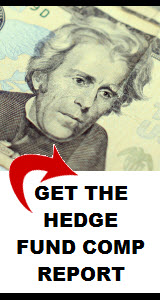Uncertainty regarding the timing of Federal Reserve interest rate hikes continues to churn as evidenced by increased market volatility. Federal Reserve Chair Janet Yellen has long insisted that any rate hike will be predicated on the nation’s unemployment figures and March yielded a paltry 126,000 new jobs. This is a dramatic 57 percent decrease from February’s figure of 295,000 leaving the unemployment rate unmoved at 5.5 percent.
Hedge fund performance, battered in large part by the unprecedented bull run the equities market has enjoyed over the past several years, risks continued pummeling if Yellen raises rates. Why? Because many funds have returned to long/short strategies in a quest for gains that rival those of the S&P 500, the unofficial (and unrealistic) performance benchmark to which many investors hold the hedge fund industry.
Partisan Politics and Economic Reality
The Board of Governors of the Federal Reserve System espouses the following: “political interference in monetary policy can generate undesirable boom-bust cycles that ultimately lead to both a less stable economy and higher inflation.”
In the years following 1980, the United States has suffered 4 recessions (busts) under the watchful eye of the Federal Reserve’s Board of Governors. Does this mean the Board was the victim of undue political influence in its administration of economic policy? You decide.
The Clinton administration redefined unemployment by excluding so-called “discouraged” workers and this practice has persisted through Republican and Democrat administrations alike—for obvious reasons. Eliminating discouraged workers can reduce the unemployment rate by as much as fifty percent.
The Board of Governors uses these unemployment statistics in formulating economic policy, including decisions regarding interest rate increases. Considering this fact, can a credible argument be put forward that the Federal Reserve is not influenced by politics?
An examination of M2 reveals this measure of the money supply grew 58 percent during Clinton’s 8 years in office, around 88 percent during the Reagan years and a modest 14 percent during Bush 41’s tenure. Under the current administration, M2 has increased 43 percent, while Bush 44’s administration saw M2 increase by 67 percent. Only Clinton’s term in office was unmarred by recession suggesting that the boom/bust cycles continue in spite of the best efforts of the Federal Reserve. Increases in this measure of the money supply have been all over the map and few conclusions can be drawn from the statistics offered here.
However, at 5.5 percent, the unemployment rate has already dipped below the 5.83 percent rate the nation has averaged between 1948 and present making it difficult for Yellen to postpone an increase in the Fed Funds rate much beyond the next Board of Governors meeting unless the administration is prepared to acknowledge that the economic recovery remains weak.
Hedge Fund Jobs
Opportunities for employment in the hedge fund industry are likely to remain soft, at least for the short term. The entire financial sector is patiently (or not so patiently) waiting for the rate shoe to drop. For obvious reasons, those aspiring to join a hedge fund firm are more likely to be successful with firms employing long/short strategies. Therefore, those having skills and experience with equities will advance to the front of the queue.






Comments on this entry are closed.